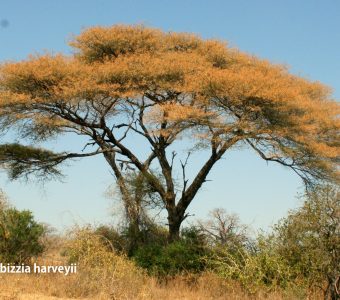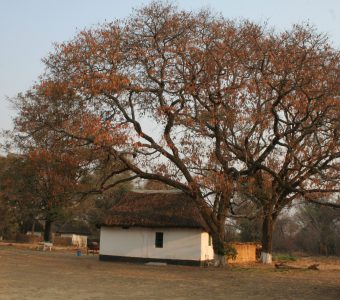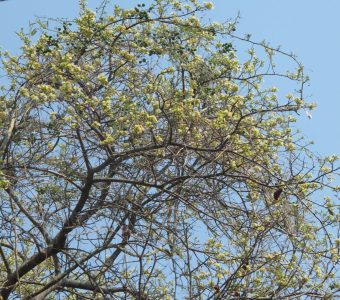


Botanical Name: Albizia harveyi
Common Name: Sickle-leaf Albizia, Mulalantanga, Mwikalankanga, Kalimika, Mkalanga
Plant Family: Fabaceae (Legume Family) Mimosoideae
Growth Form, Habitat and Distribution: A small to medium sized Acacia-like deciduous tree, often upward branching from a short and crooked trunk to give a rounded, open crown. Confined to the drier western, southern and eastern parts of Zambia, usually in Munga and Mopane woodland, typically on termite mounds and often gregarious. Similar to Albizia amara but has a distinctive sickle-shaped leaflet. The bark exudes a gum when damaged. The leaflets are narrow, pointed, sickle-shaped, and grey-green.
It flowers between September and November. Flowers are fragrant, small, white to yellowish, in semi-circular axillary branched heads. The seed pods are flat, oblong (up to 25cm), papery, pale brown, rounded both ends (4 to 13cm), ripening June to September. Pods main remain on the tree.
Size: Height up to 14m, usually smaller, spread 5 to 8m.
Uses: The wood is heavy, strong and usable. The foliage and fruit are eaten by wildlife. The roots are used in traditional medicine.
